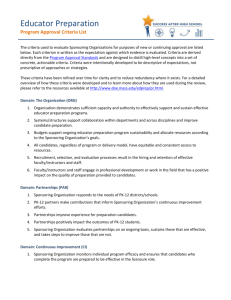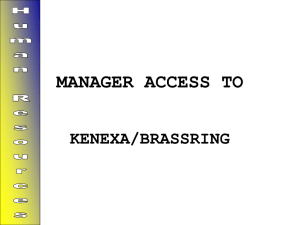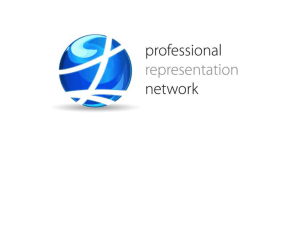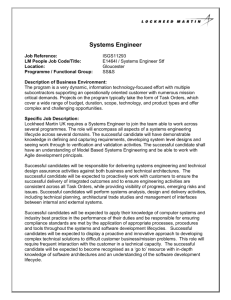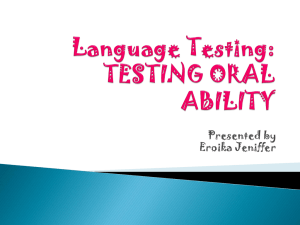2014-2015 & 2015-2016 Review Evaluation Criteria List
advertisement
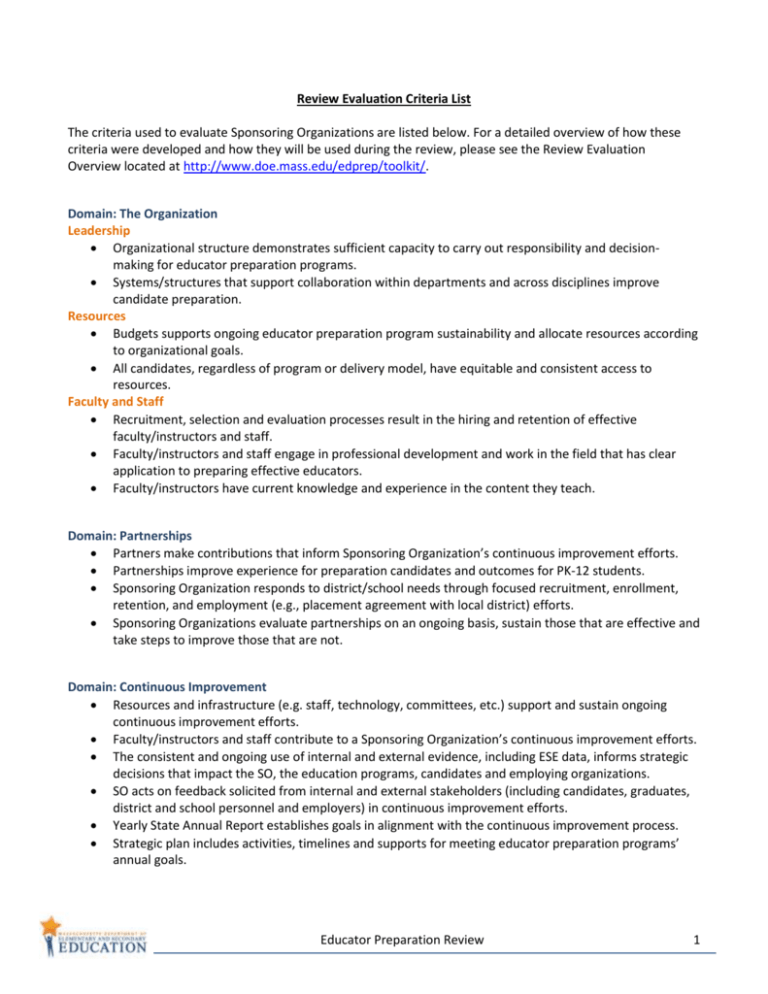
Review Evaluation Criteria List The criteria used to evaluate Sponsoring Organizations are listed below. For a detailed overview of how these criteria were developed and how they will be used during the review, please see the Review Evaluation Overview located at http://www.doe.mass.edu/edprep/toolkit/. Domain: The Organization Leadership Organizational structure demonstrates sufficient capacity to carry out responsibility and decisionmaking for educator preparation programs. Systems/structures that support collaboration within departments and across disciplines improve candidate preparation. Resources Budgets supports ongoing educator preparation program sustainability and allocate resources according to organizational goals. All candidates, regardless of program or delivery model, have equitable and consistent access to resources. Faculty and Staff Recruitment, selection and evaluation processes result in the hiring and retention of effective faculty/instructors and staff. Faculty/instructors and staff engage in professional development and work in the field that has clear application to preparing effective educators. Faculty/instructors have current knowledge and experience in the content they teach. Domain: Partnerships Partners make contributions that inform Sponsoring Organization’s continuous improvement efforts. Partnerships improve experience for preparation candidates and outcomes for PK-12 students. Sponsoring Organization responds to district/school needs through focused recruitment, enrollment, retention, and employment (e.g., placement agreement with local district) efforts. Sponsoring Organizations evaluate partnerships on an ongoing basis, sustain those that are effective and take steps to improve those that are not. Domain: Continuous Improvement Resources and infrastructure (e.g. staff, technology, committees, etc.) support and sustain ongoing continuous improvement efforts. Faculty/instructors and staff contribute to a Sponsoring Organization’s continuous improvement efforts. The consistent and ongoing use of internal and external evidence, including ESE data, informs strategic decisions that impact the SO, the education programs, candidates and employing organizations. SO acts on feedback solicited from internal and external stakeholders (including candidates, graduates, district and school personnel and employers) in continuous improvement efforts. Yearly State Annual Report establishes goals in alignment with the continuous improvement process. Strategic plan includes activities, timelines and supports for meeting educator preparation programs’ annual goals. Educator Preparation Review 1 Domain: The Candidate Recruitment Recruitment efforts yield a diverse candidate pool. Admission Admission criteria and processes are rigorous such that those admitted demonstrate success in the program and during employment in licensure role. Admission process supports the selection of a diverse candidate pool. Admission criteria for post-baccalaureate candidates verify content knowledge upon entrance to the program. Advising Structures and processes ensure that candidates receive effective advising throughout the program. Career development and placement services support candidate employment upon completion. Candidates at-risk of not meeting standards are identified throughout the program (in pre-practicum, during coursework, and while in practicum) and receive necessary supports and guidance to improve or exit. Candidates are knowledgeable about the requirements for licensure. Waiver policy ensures that academic and professional standards of the licensure role are met. Candidates are endorsed for the approved program of study completed. Domain: Field-Based Experiences Structure Practicum hours meet regulatory requirements as per 603 CMR 7.04 (4) District partners are involved in the design, implementation and assessment of field-based experiences. Responsibilities in field-based experiences build to candidate readiness for full responsibility in licensure role. Candidates participate in field-based experiences that cover the full academic year. Field-based experiences are embedded in program coursework. Supervision Supervising Practitioner qualifications meet regulatory requirements set forth in 603 CMR 7.02 and in Guidelines for Program Approval. Program Supervisors provide consistent guidance, support and feedback to candidates in the practicum. Supervising Practitioners and Program Supervisors receive training, support and development from the SO that impacts candidate effectiveness. Sponsoring Organization monitors candidate experiences with individual Supervising Practitioners and Program Supervisors, continuing those relationships that are effective and discontinuing those that are ineffective. Completion of Pre-Service Performance Assessment evaluates and indicates candidates have documented evidence in support of candidate readiness for the licensure role. Practicum agreements and meetings between candidate, Program Supervisor and Supervising Practitioner are documented in candidate files. Placement SO secures and/or verifies placement(s) that meet regulatory requirements and SO’s expectations for all candidates. Field-based experiences are in settings with diverse learners (e.g., students from diverse ethnic, racial, gender, socioeconomic, and exceptional groups). Educator Preparation Review 2 Domain: Instruction (evaluated per program) Design Program of Study meets regulatory requirements for applicable licenses set forth in 603 CMR 7.03 (3) (a) and (b) and 7.04 (2) (c) 5. b. i. or c. i. Program of Study addresses all SMK requirements set forth in 603 CMR 7.06, 7.07, 7.09, and 7.11at the appropriate licensure level (if applicable). Program of Study addresses all Professional Standards set forth in 603 CMR 7.08 or 7.10 at the appropriate licensure level (if applicable). Course descriptions clearly state what candidates will know or be able to do by the end of the course. Program design results in a coherent program of study such that connections among and between courses are evident. Program of Study is sequenced to support the increased depth of skills and knowledge acquired and applied over time. Content is differentiated by subject area and level of licensure being sought. Delivery Content delivery is calibrated for consistency within programs (e.g. different instructors of same course, in satellites, online, etc.). Candidate understanding and application of MA Curriculum frameworks is an embedded expectation in preparation coursework. Faculty/instructors model effective pedagogical and content practices of discipline. Faculty/instructors model practices and strategies to meet the needs of diverse learners. Assessment Faculty/instructors use course formative and summative assessment data to target areas of candidate need. Courses assess what candidates know or are able to do by the end of each course. Candidates receive targeted feedback linked to appropriate SMK and/or Professional Standards (i.e. Professional Standards for Teachers) that improves their practice. Educator Preparation Review 3
